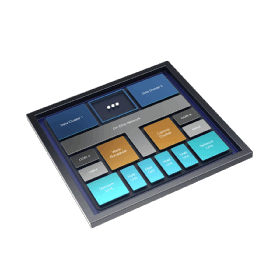
plus69free - Fotolia
How do data processing units support enterprise storage?
While only a small number of hardware vendors offer DPUs, the technology has significant implications for IT storage systems -- and the admins who manage them.
While data processing units are a hot trend in IT storage, the basic concept behind them is not entirely new.
Modern computer operating systems such as Windows and Linux perform computationally intensive tasks not directly related to the system's primary workload. Over the last few decades, IT vendors have found creative ways to offload some of these tasks to specialized hardware. This hardware frees up CPU resources to run the system's primary workload. Data processing units (DPUs) are one of the latest examples.
In the 1990s, for instance, systems created to run computer-aided design applications often used a math coprocessor to handle mathematically intensive operations. As a result, the primary CPU wouldn't need to handle those tasks. In more recent years, hardware vendors have introduced network cards that offload TCP/IP-related tasks from the CPU, as well as dedicated GPUs that prevent a system's CPU from wasting resources to render graphics.
Data processing units adhere to this same basic concept, but with one key difference: The offloading methods discussed above focus on compute, while DPUs aim to optimize data movement.
Unlike a GPU that serves a specific purpose, data processing units tend to be more general-purpose. A DPU is typically equipped with a multi-core CPU, high-speed networking interfaces, memory controllers and PCIe sockets. The DPU has its own dedicated operating system separate from the system's primary OS. When admins combine these resources with the DPU's native accelerators for components like cryptocurrency and storage, the versatility of a DPU is apparent.

Data processing units can aid enterprise storage. For example, connect one or more NVMe storage devices directly to the DPU's PCIe bus to enable high-speed access to those devices.
Data processing units can also connect to remote storage devices that use NVMe-oF. The DPU can present the remote storage device to the system as standard NVMe storage. As such, the DPU optimizes the connectivity to the remote storage, but it also obfuscates the remote storage device. The DPU presents it as standard NVMe storage that most modern operating systems can use without the need for special drivers.
Vendors such as Nvidia and Fungible currently lead the way in DPU development.





